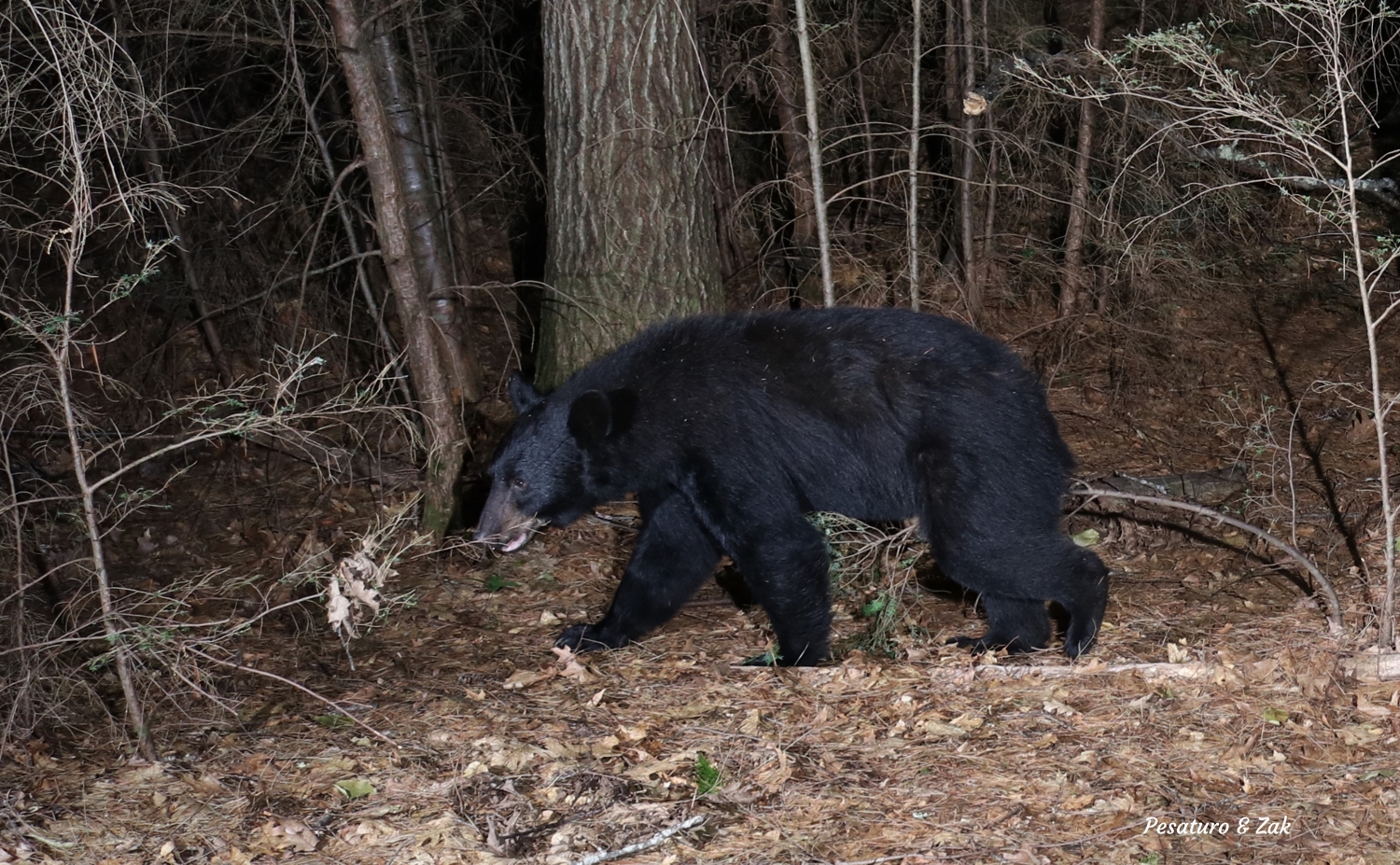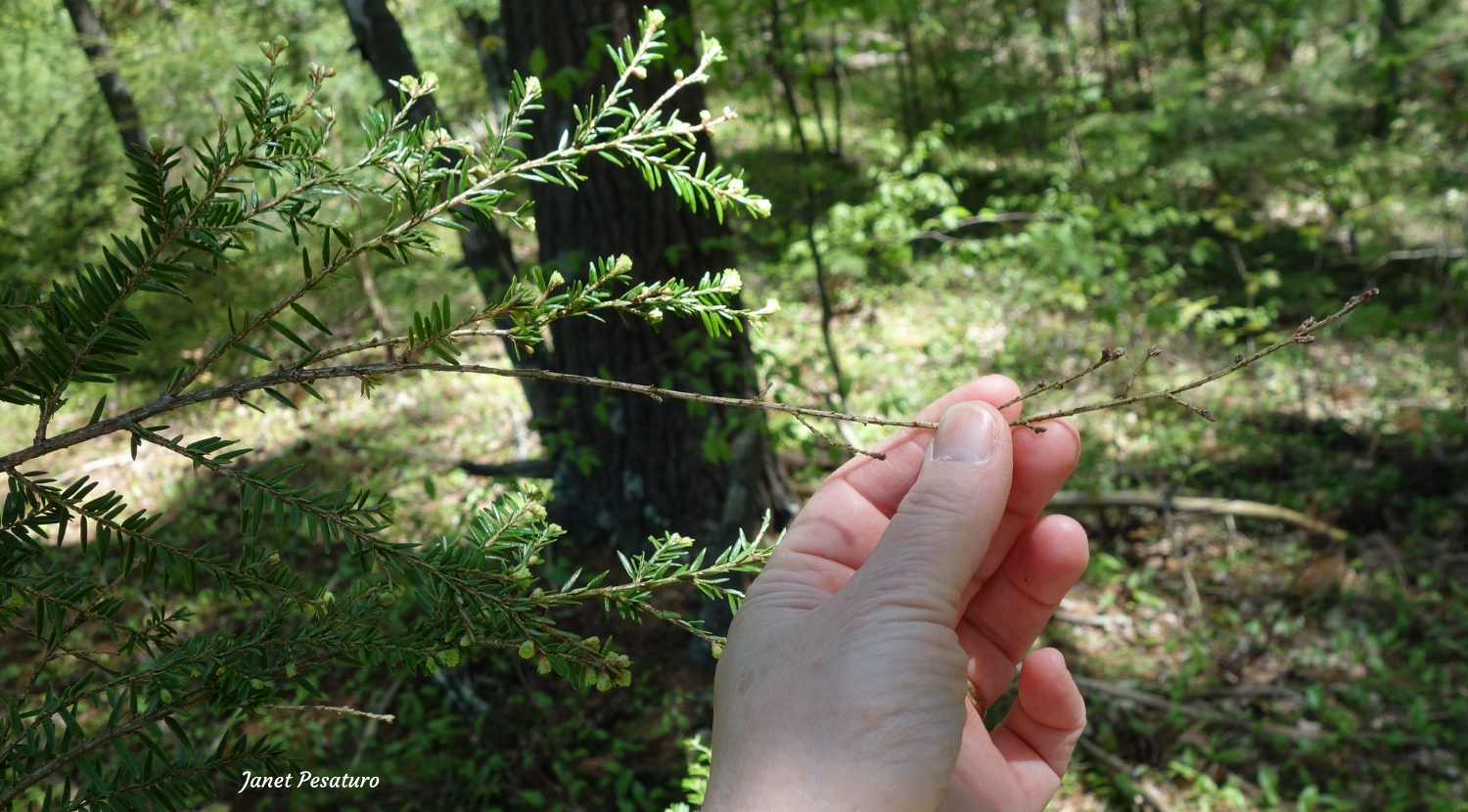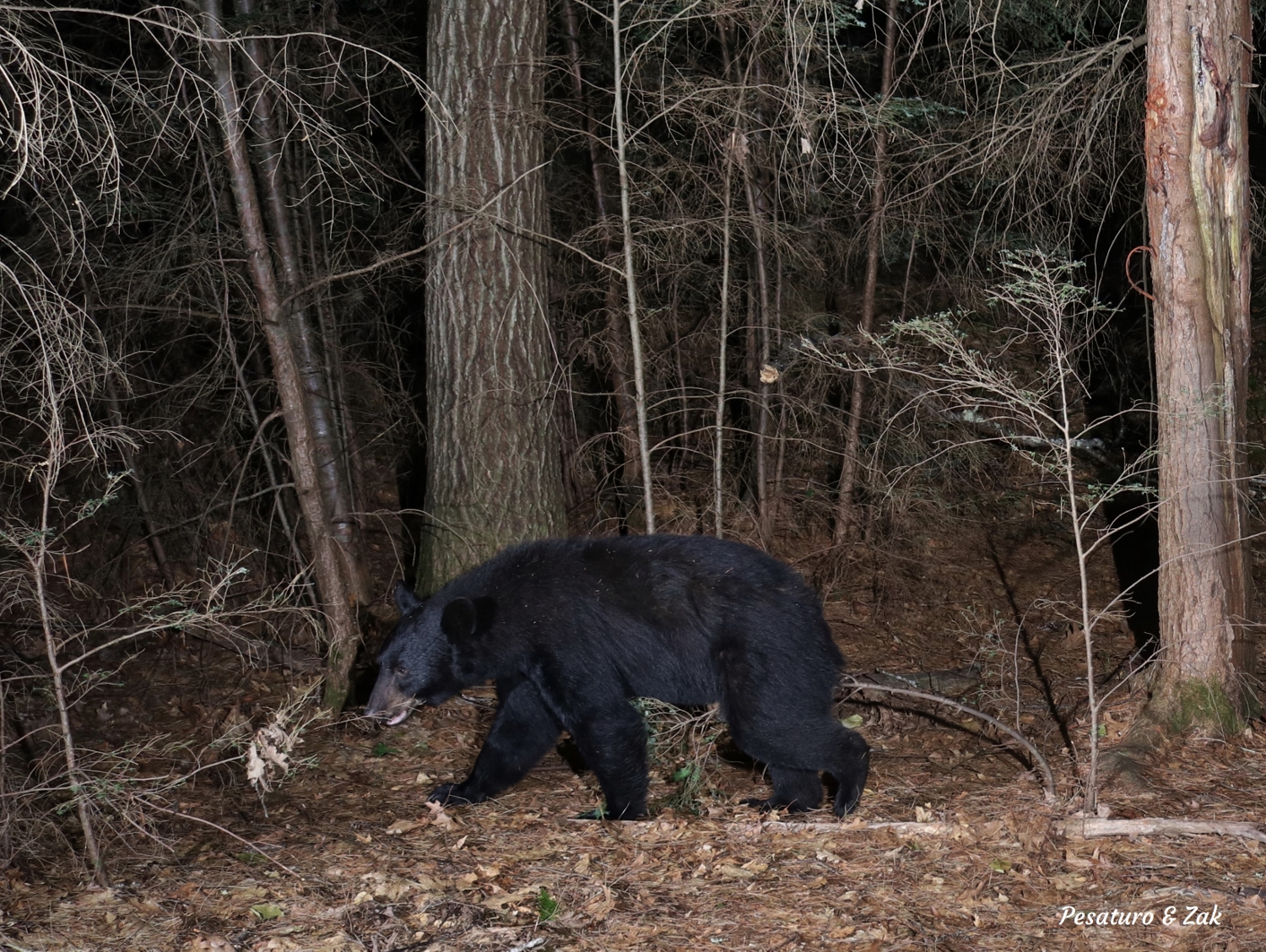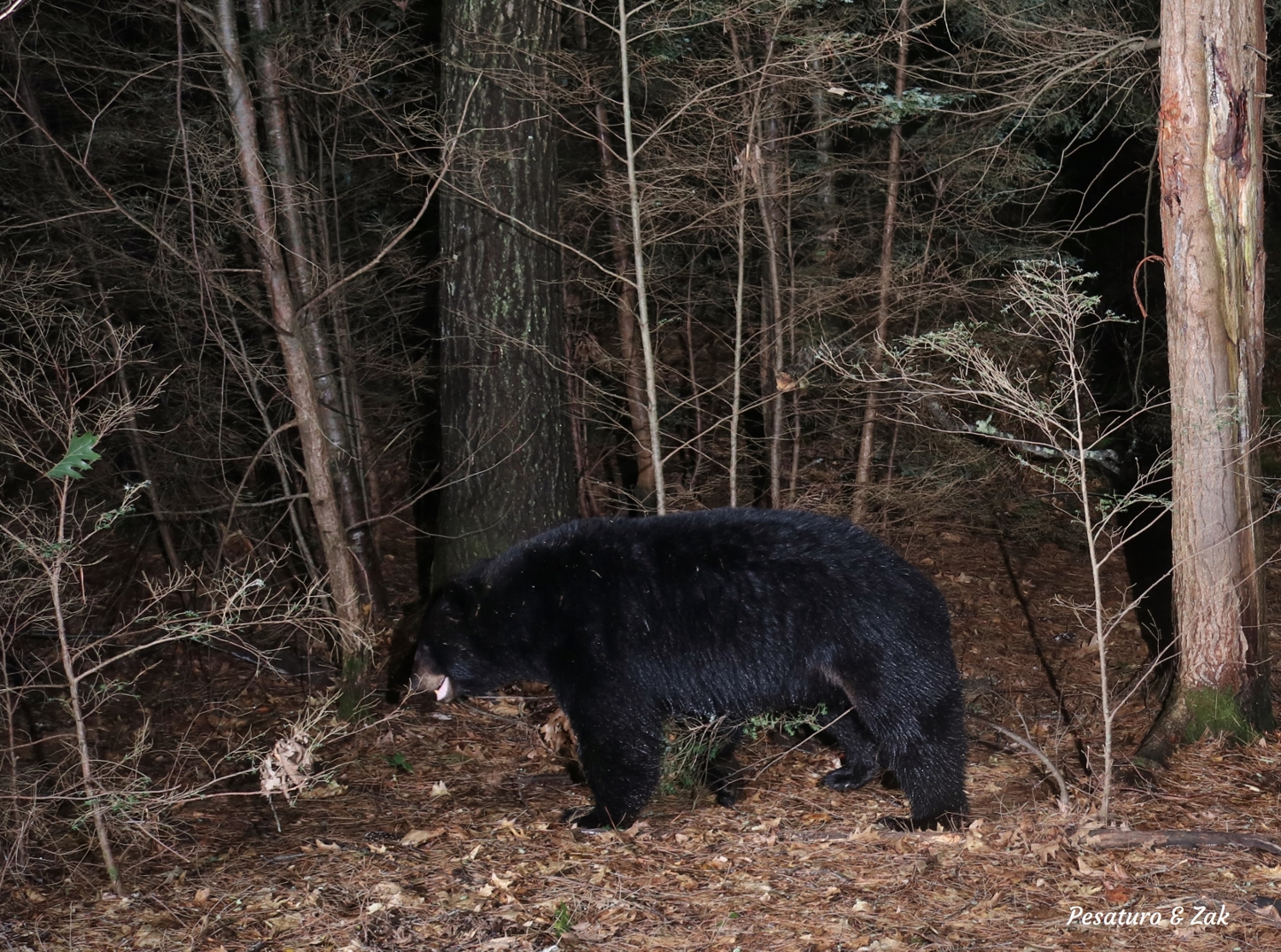Black Bear Straddle Marking

Black bears engage in various behaviors thought to relate to scent communication. As I’ve discussed before, they mark larger trees by rubbing, biting, and clawing at them, and they mark the ground with their feet by as they walk, sometimes creating well-worn stomp trails. They also mark small trees and bushes with urine by straddling them as they travel, a behavior called straddle marking. Females dribble urine almost constantly, and males may urinate while straddling vegetation.
Identifying Straddle Saplings
Bears probably straddle mark many saplings and bushes, some of which they might never mark a second time. Marked only once, it might bear little visible, lasting sign. A wet urine stain might be seen if examined immediately after marking, or some hair strands may be caught on it. But I have found that some straddle saplings are associated with mark trees and stomp trails, and as part of the marking complex, the sapling is subject to repeated use, just like the tree and the trail. This results in more noticeable damage.
I have found that hemlock used for straddle marking may be missing needles at or near the top, as seen in the photo below. Deciduous straddle saplings and bushes may have torn or creased leaves as shown in this example (the first photo in that article) but I don’t know if the sign on that example was the result of a single marking event or repeated use.

Mark Tree – Stomp Trail – Straddle Sapling Complexes
In Massachusetts, hemlock saplings located near mark trees and stomp trails seem to be a popular choice (perhaps because they are abundant) for straddle marking. This I have learned from my own field experience, and I’ve confirmed it with camera trap photos and videos. Sometimes a bear will mark all three elements, and this is usually a large, mature animal, probably an adult male. Other times, a bear will skip the mark tree but straddle the sapling, or vice versa. Stomping may or may not be evident. All of this marking behavior begins in late April, peaks in May and June (the mating season) and becomes occasional in summer.
Study the two photos below taken in the same location and targeting the same mark tree – stomp trail – straddle sapling complex. Notice:
- The bear is straddling a hemlock sapling as it walks
- Two different bears are using the same straddle sapling
- The bear in each photo has its mouth open, which probably indicates it is gathering and interpreting odor molecules (flehmen response)
- The large light-colored tree at the far right is a mark tree, as evidenced by both fresh and scarred lesions around eye level


Video of Bear Behavior at Marking Complexes
Watch the video below to see several examples of bear behavior at two different mark tree – stomp trail – straddle sapling complexes. These two complexes are about a thousand feet apart on the same bear trail. Notice that there are at last two different bears, and that they don’t always mark all three elements of the complex.
Questions and Comments on Black Bear Straddle Marking
As always, I welcome your thoughts in the comment section. I’m especially interested in observations of vegetation used for straddle marking in different regions. What tree and shrub species are bears using in your area? What kind of sign do you see on them? Have you noticed straddle saplings or bushes in association with mark trees and stomp trails?
Sources
Elbroch, M. and K. Rinehart. Behavior of North American Mammals. New York, NY: Houghton Mifflin Harcourt Publishing Company, 2011.

So interesting to learn about bear behavior! Great footage!
Thanks! I’m glad you found it interesting!
i’ve always wondered what my dogs are smelling on small saplings, bushes etc when we are walking in the woods. one of them will stay there for 15 minutes smelling. no wonder, now i know!
Your dogs could well be smelling bear marking, but as you probably know, other animals mark saplings and shrubs as well. Domestic and wild canids sometimes pee on them, and bobcats spray them. Fishers mark very small conifer saplings. There’s a lot of scent communication going on out there!
Wonderful and amazing! Thanks so much for sharing! Question: do both male and females straddle mark and stomp? Or only males?
Yes, both males and females straddle mark and stomp. Both sexes also mark rub trees. I’m glad you enjoyed the article!
Well I guess I have several questions and I know that this isn’t exactly what the article was meant for but I currently live in the woods in Dover New Hampshire and I have realized recently due to Bear tracks directly behind my tent and fresh scratches down a nearby tree that we have a bear coming into our campsite and at first not immediately concerned I know these things will happen, the concern is that I believe the bear keeps coming back I keep hearing it and I’m pretty sure that this morning I after hearing lots of odd noises last night staying up all night and making noise to alert the bear of my presence I still found tracks directly outside my front door of my tent and I’m fairly sure that it straddle marked a tree a few feet from my tent. Now I’m getting a little concerned for my safety, is it trying to tell me that I’m in his territory and I need to leave is it a curiosity thing am I safe as long as I continue to hurt the bear of my presence or do I need to pack up shop and get out of there like today? I apologize because as I said I do know that’s not really what this article is for but I’m not really sure who else to ask I appreciate the help thank you
I am not the authority on this and suggest you contact NH Fish and Game Dept. All I can say is if this happened at my campsite I’d pack up and leave. It may be a bear that has raided camp sites before, or maybe even intentionally fed by people. Regardless, it seems it has lost its fear of humans and could be dangerous. Get out before something terrible happens.